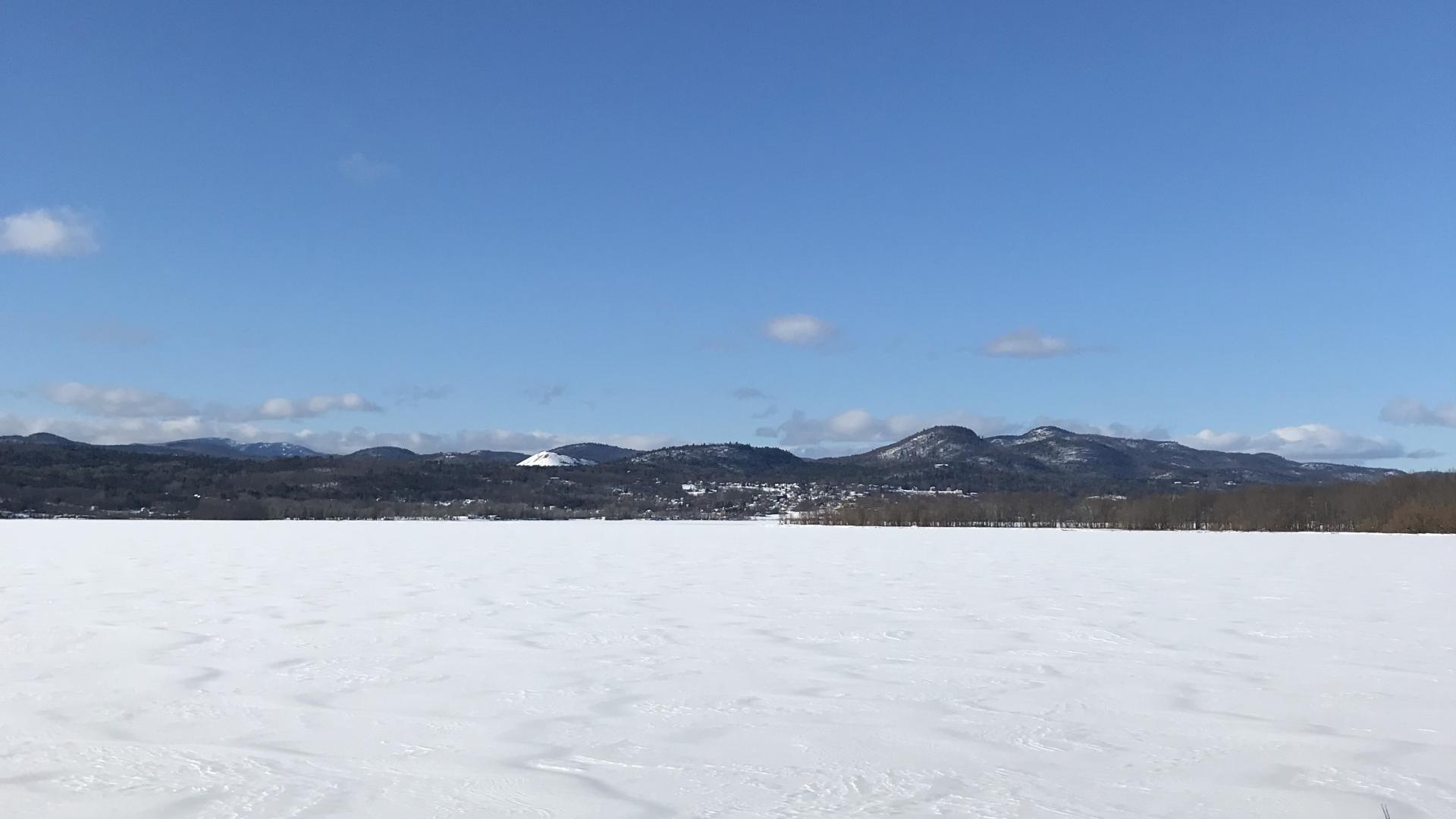Submitted by Guest Blogger Lisa Polay, Site Manager for Crown Point State Historic Site
I arrived to the Champlain Valley via Maine, where winters are truly unrelenting: stormy grey skies above, the Atlantic thundering over the rocky shore below and where the wind and plunging temperatures can freeze the tide in place as it hits the sand.
Looking out over the gentle vast expanse of Lake Champlain, flanked by the craggy peaks of the Adirondacks and the purple mountains of Vermont, winter seems more forgiving. As my first holiday season approached, I watched the ice creep ever forward on the lake; the birds resting on the edge of the ice shelf marking the boundary between frozen and moving waters.
I came to the area to take stewardship of Crown Point State Historic Site, the site of two pre-Revolutionary War forts. I am the out-of-towner amongst the true caretakers of our grounds, all of whom are lifelong residents. As the temperature dipped lower, and I overheard talk in the lunch room, I learned that means they are also lifelong fishermen. Just after the turn into the new year, I could hear daily condition reports from lake to lake, what species were caught, who got out earlier, who stayed out the latest and stories from a time in which each ended with “it’s not like that anymore.” The only fishing I’ve known was one trip out with my grandfather in Chenango Valley (it consisted of mainly staring at him, staring at the water, and asking when we were heading back) and a middle school excursion in Long Island Sound, catching only a blistering sunburn. Fishing hadn’t yielded any great memories for me. But something was different about this place. So, I start to do what a historian does. I start researching to understand.
The first stop is a visit to Betty LaMoria, Town Historian of Port Henry. The office is located above the Iron Center museum, a Second Empire-style carriage house next to town hall. Port Henry was the largest pre-war producer of iron ore in the United States, but the second season industry starts when the ice came to town. Entire villages would spring up on the expanse of Bulwagga Bay where it opens into Lake Champlain. The shanties stood in the shadow of the Cedar Point Blast Furnace (which is now the marina and town pier). She shows me the newspaper articles and old photos and I am in disbelief at the makeshift neighborhoods, set up for the season on the frozen lake, waiting to capture the life teeming below.
Ice fishing has been sport and sustenance, industry and income, depending on the year, ecology and popular taste. From the mid 1800s through the 1930s, perch and smelt were in high demand, and those caught in Lake Champlain in particular were considered delicacies. Fish was easy to transport as it could be loaded onto the 11 p.m. train in Port Henry and make the overnight to Albany, New York and Philadelphia to be sold at the fish markets the next morning. The more enterprising fishermen would obtain standing orders for anywhere from thirty to a hundred pounds a week from hotels in those cities. However, a lucrative fishing location requires commitment. Fishermen might be out on the ice for a week at time, maybe more, with family delivering groceries or kerosene, so the fishing could continue uninterrupted.
We’re always looking for ways to engage our local community in history and education, and with our ample shoreline frontage on the bay and lake - and a staff of anglers - it’s a no-brainer what we’ve got to do next. With our crew recommendations – and more than one visit with Norm St. Pierre of Norm’s Bait and Tackle up Bridge Road - we secure tip ups, jigs, line, bait, crampons, skimmers, and extra hats and mittens. We apply for our permits with the DEC. Then we put the word out.
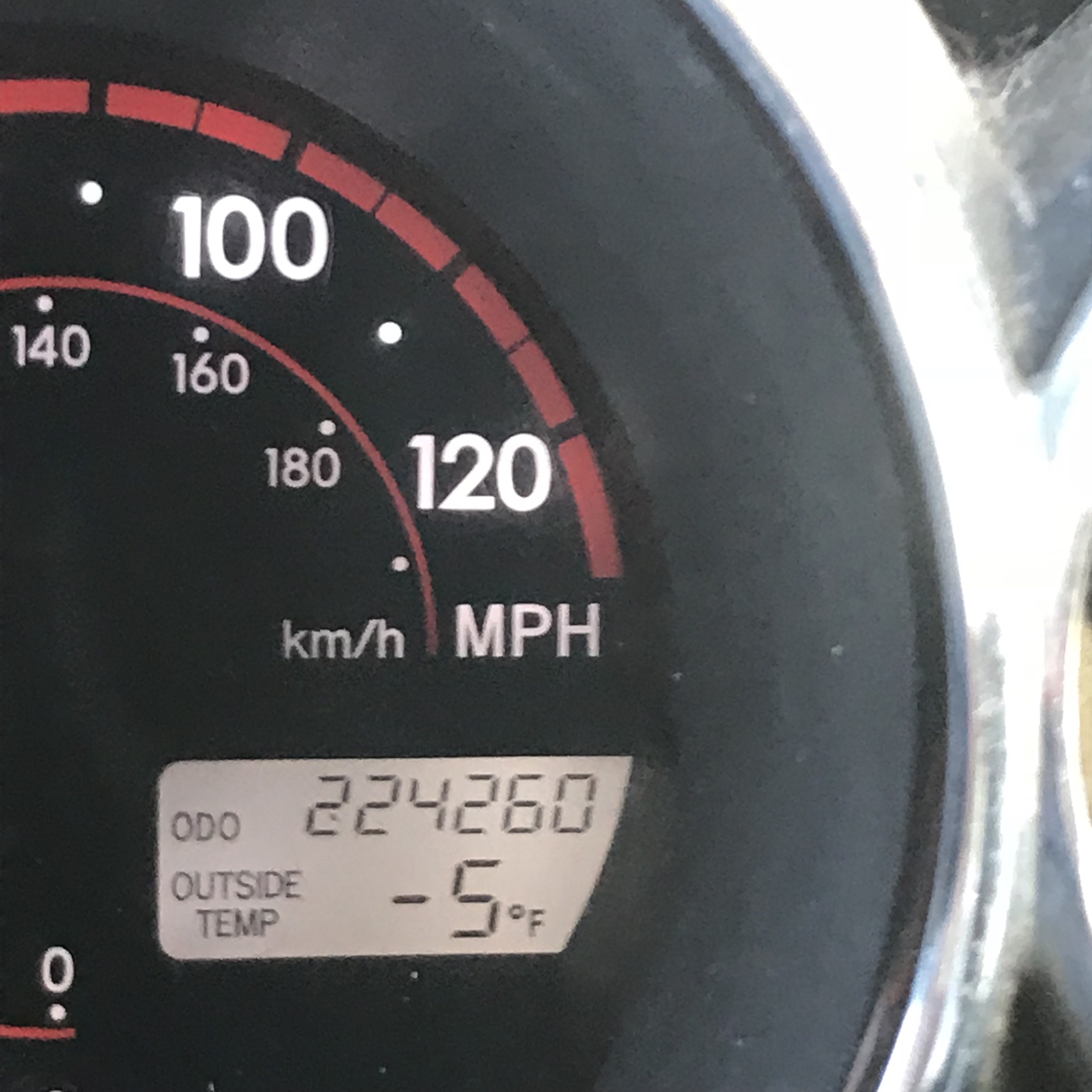
It’s negative five degrees when I go out to start the car. The cold hits my skin and stings. The guys have sent me a message that they are out on the ice setting up. We’ve got third through six graders arriving today. We can show them how to fish, however we can’t promise they eat for a lifetime just yet. Field and Stream referred to Lake Champlain as one of the 25 “hottest places to fish.” “…What sets Lake Champlain apart," write the editors, “is its vast size and diverse mix of rocky points, gravelly shoals and shallow weedy bays and river mouths…with a surface area of 435 square miles and almost 600 miles of shoreline, it has tens of thousands of acres of prime cover.” That sounds impressive, but are we really going to catch anything? I can only hear the sound of my grandfather cracking open another beer.
As the kids arrive, I note each one has on more layers than the next. We make the bathroom a priority before their parents depart, strap on crampons, and then pile each of the colorful mini Michelin men (and ladies) into the truck. There are no clouds and the sky is a brilliant blue. It’s warmed to a balmy two degrees as we make our way out onto the ice. There is something magical about the ability to be able to walk out onto the lake, and in a few minutes, turn around to have a completely different perspective of the surrounding geography. The group gets oriented in the shelter (which with the heater, I am shocked to learn, one can go without a coat), learning how to set a tip up and use a jig. After everyone takes practice turns at the hole, hats, gloves, scarves, and mufflers are back on, and we head out to fish.
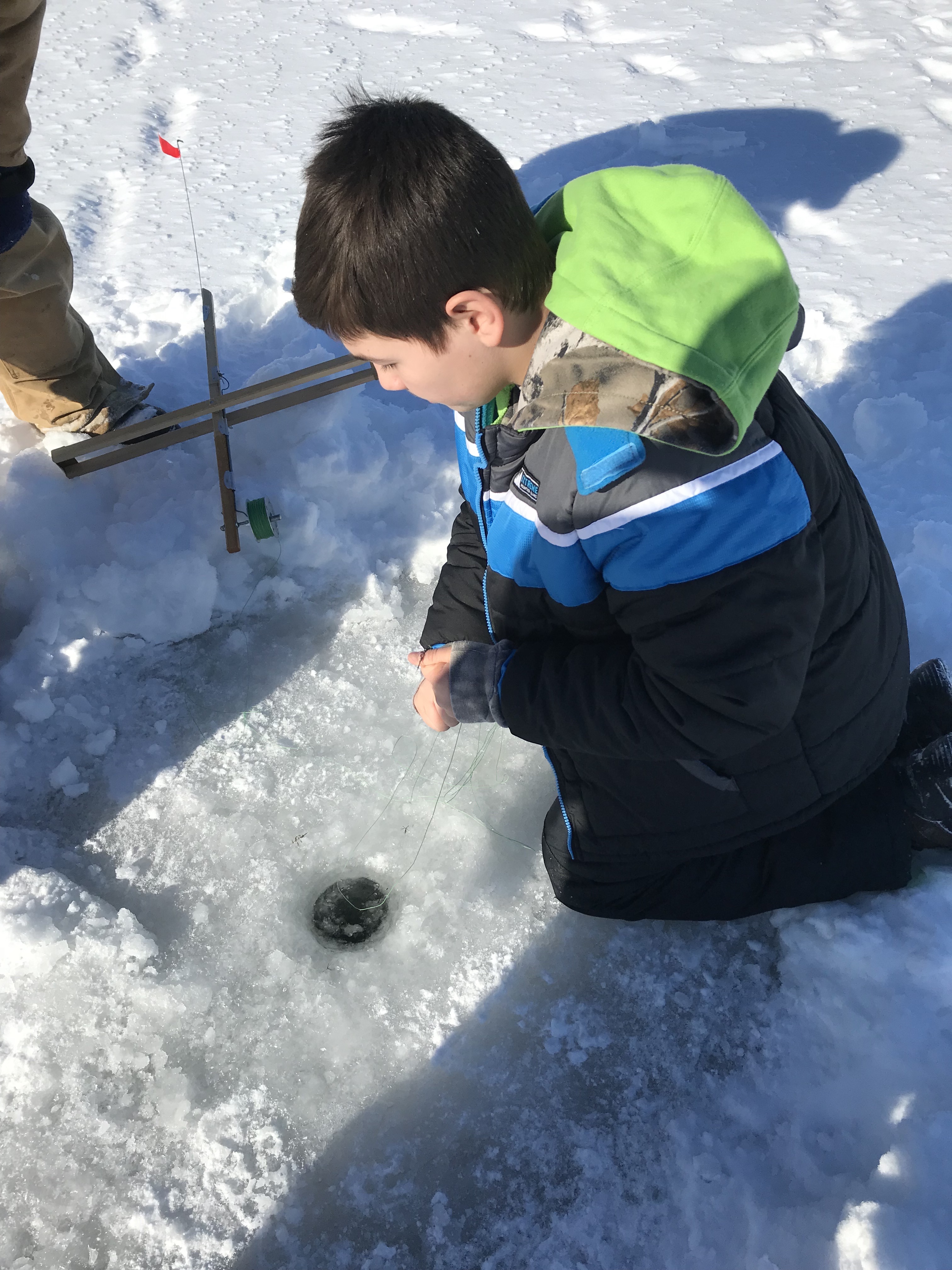
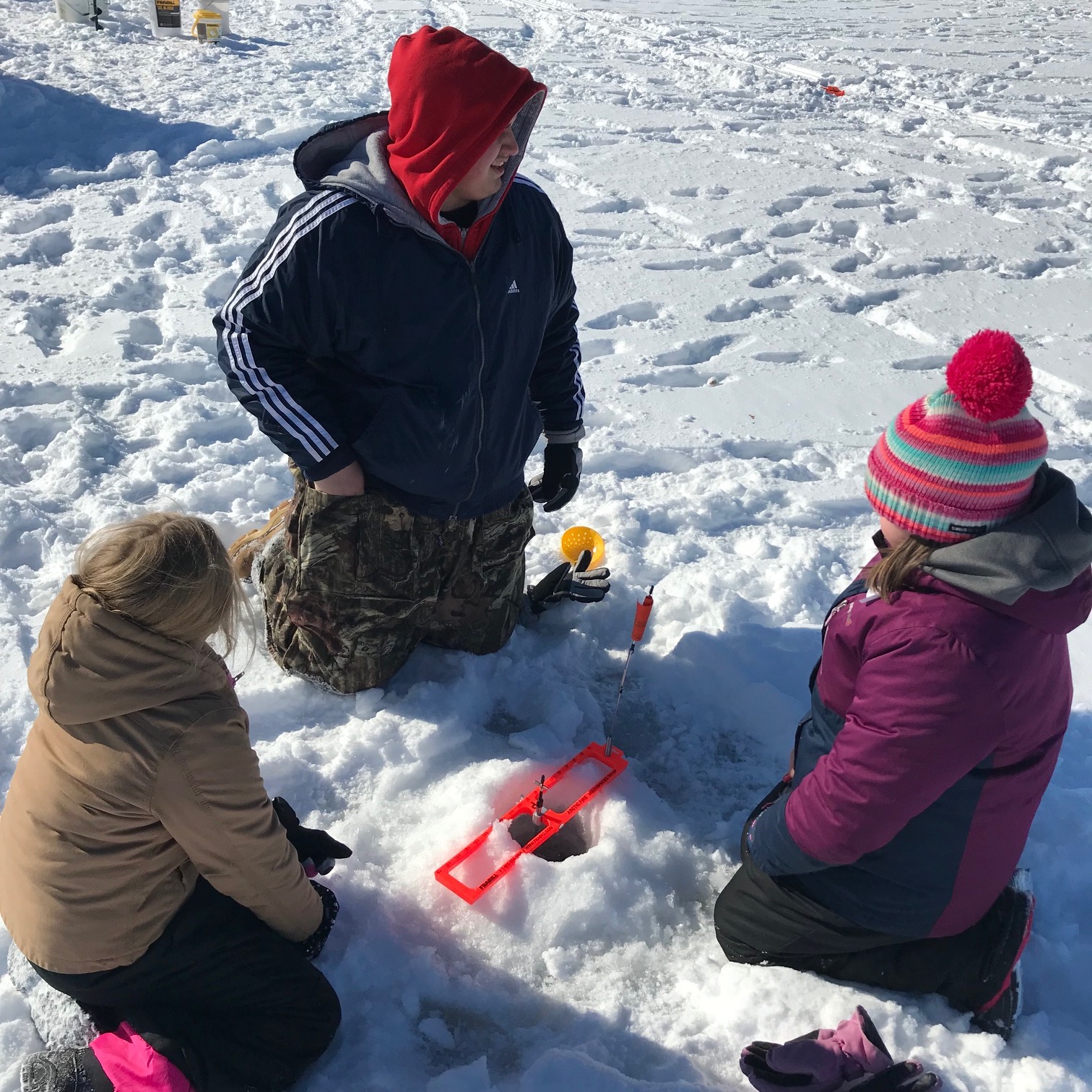
There are twenty holes with tip ups straddling the openings, the neon red easy to see from a distance. The kids visit the nearest hole to try to peer down past the fourteen inches of ice. Not 10 minutes have passed when someone yells “TIP UP” and all heads snap to attention and start scanning the surface for the upright flag. And like the bulls of Pamplona, once unleashed, get out of the way as everyone runs (albeit as much as possible with all the layers) towards the flag. There is a pull on the line, and then, hand over hand, and a moment later – a northern pike. The kids are ablaze, flush with victory, and the tips ups keep on flagging. I am shuttling the kids back and forth for bathroom breaks but note the pile of fish growing upon each return trip.
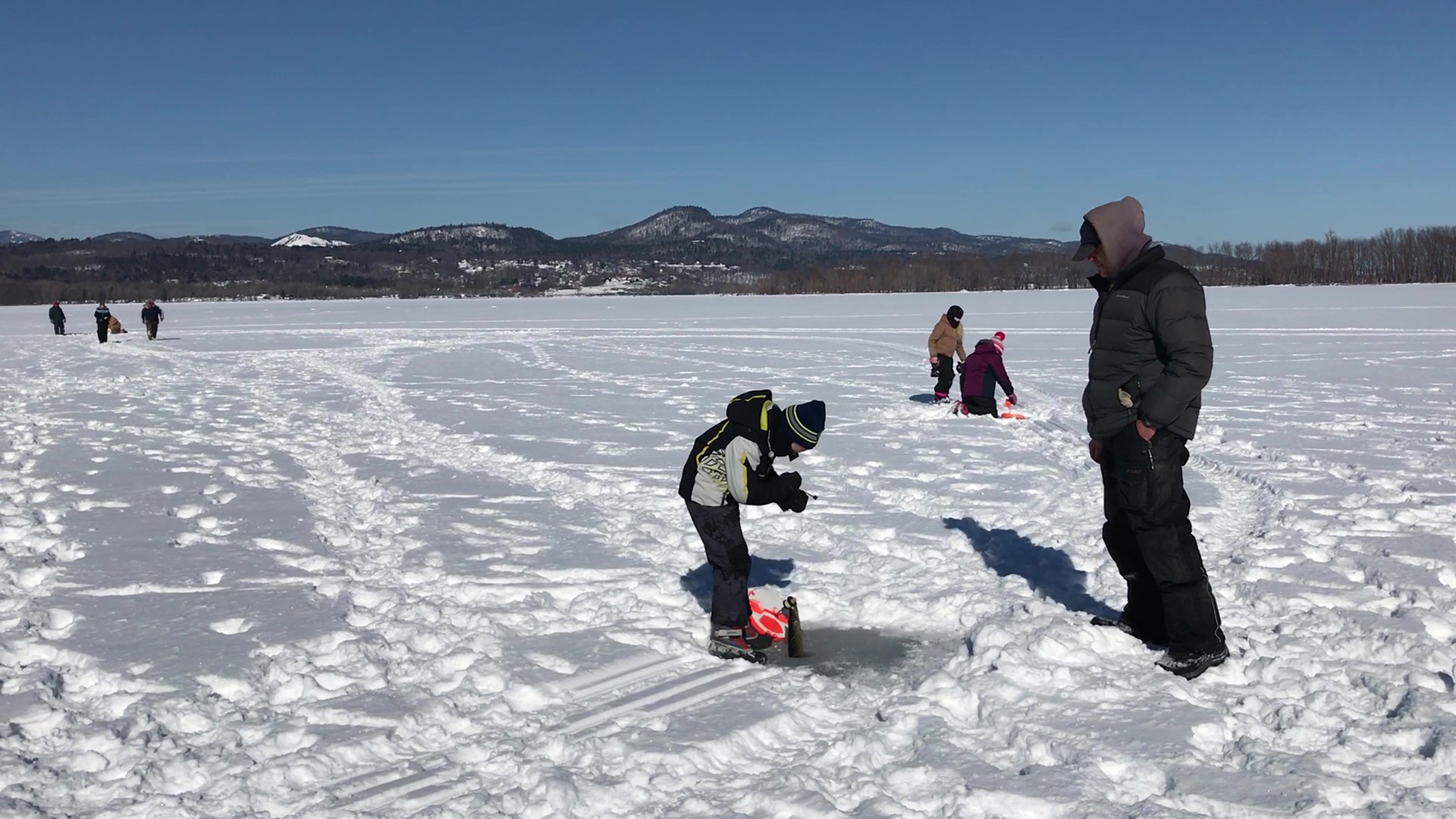
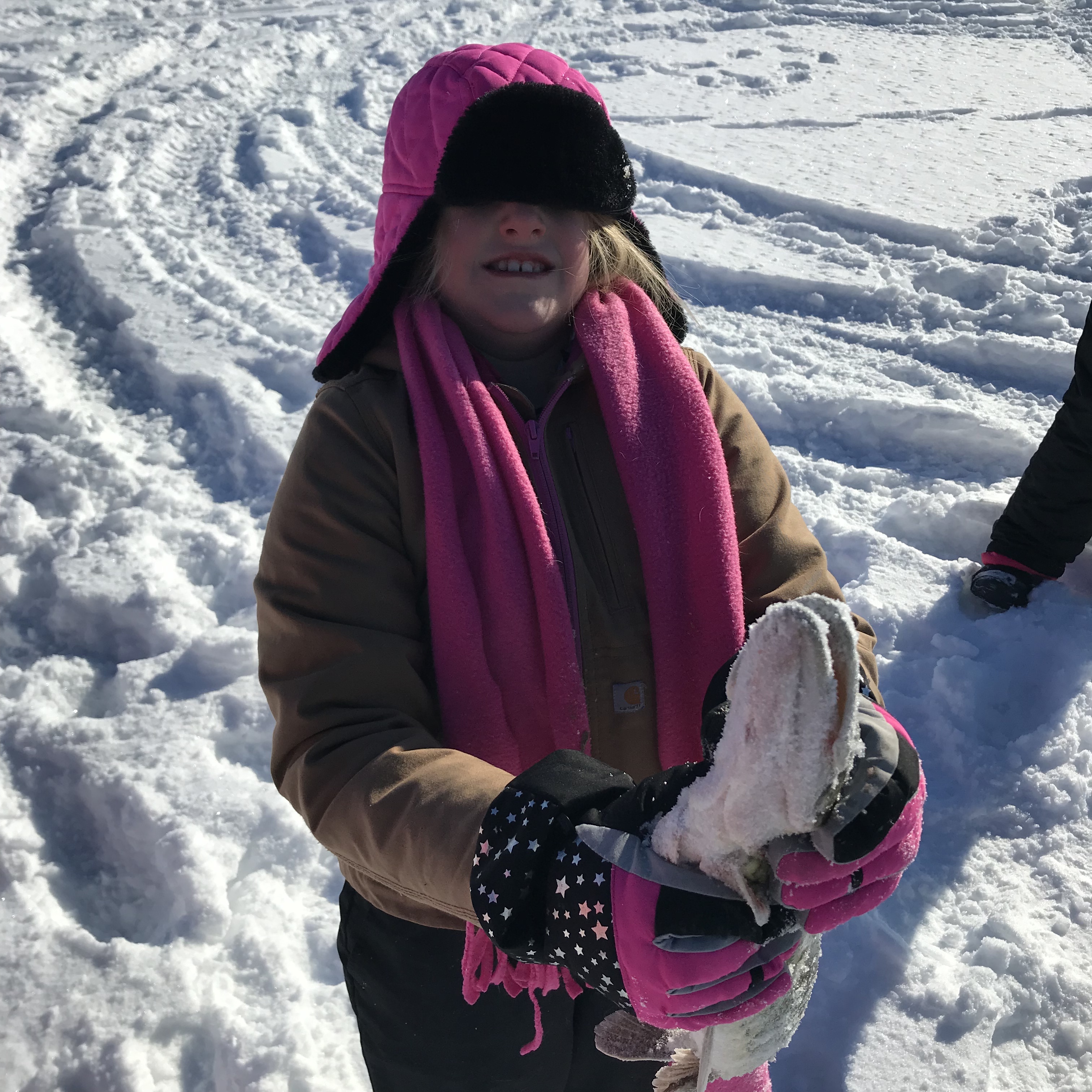
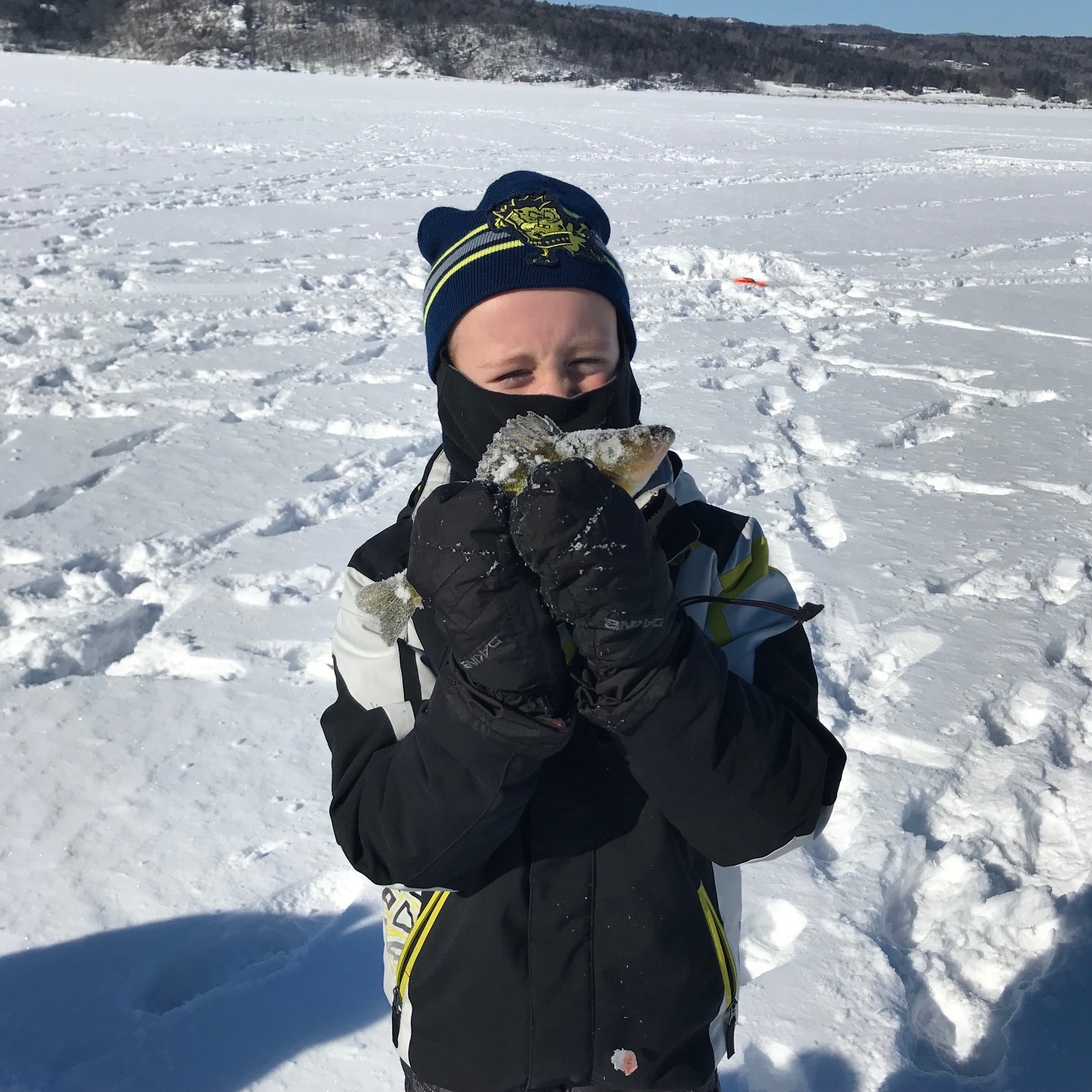
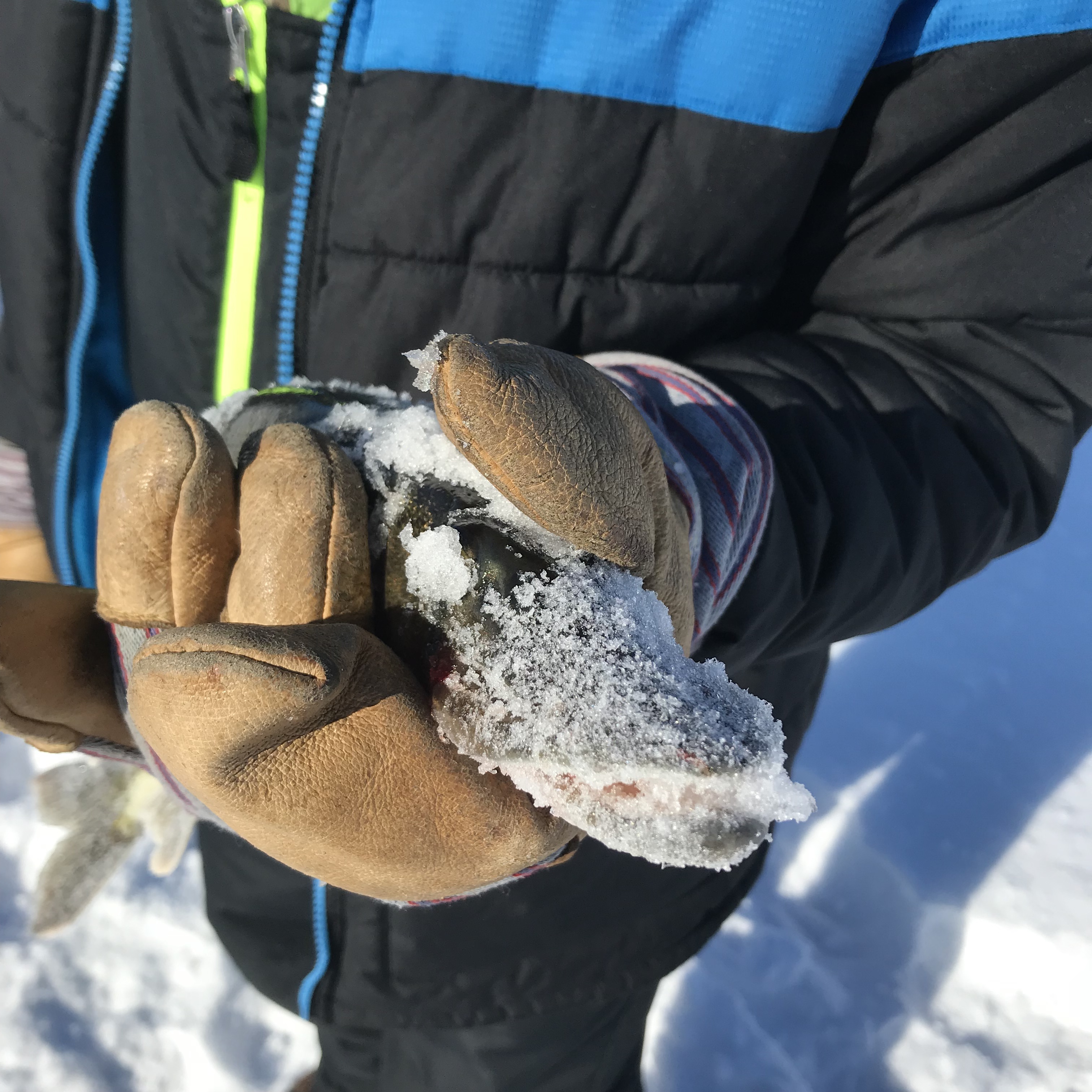
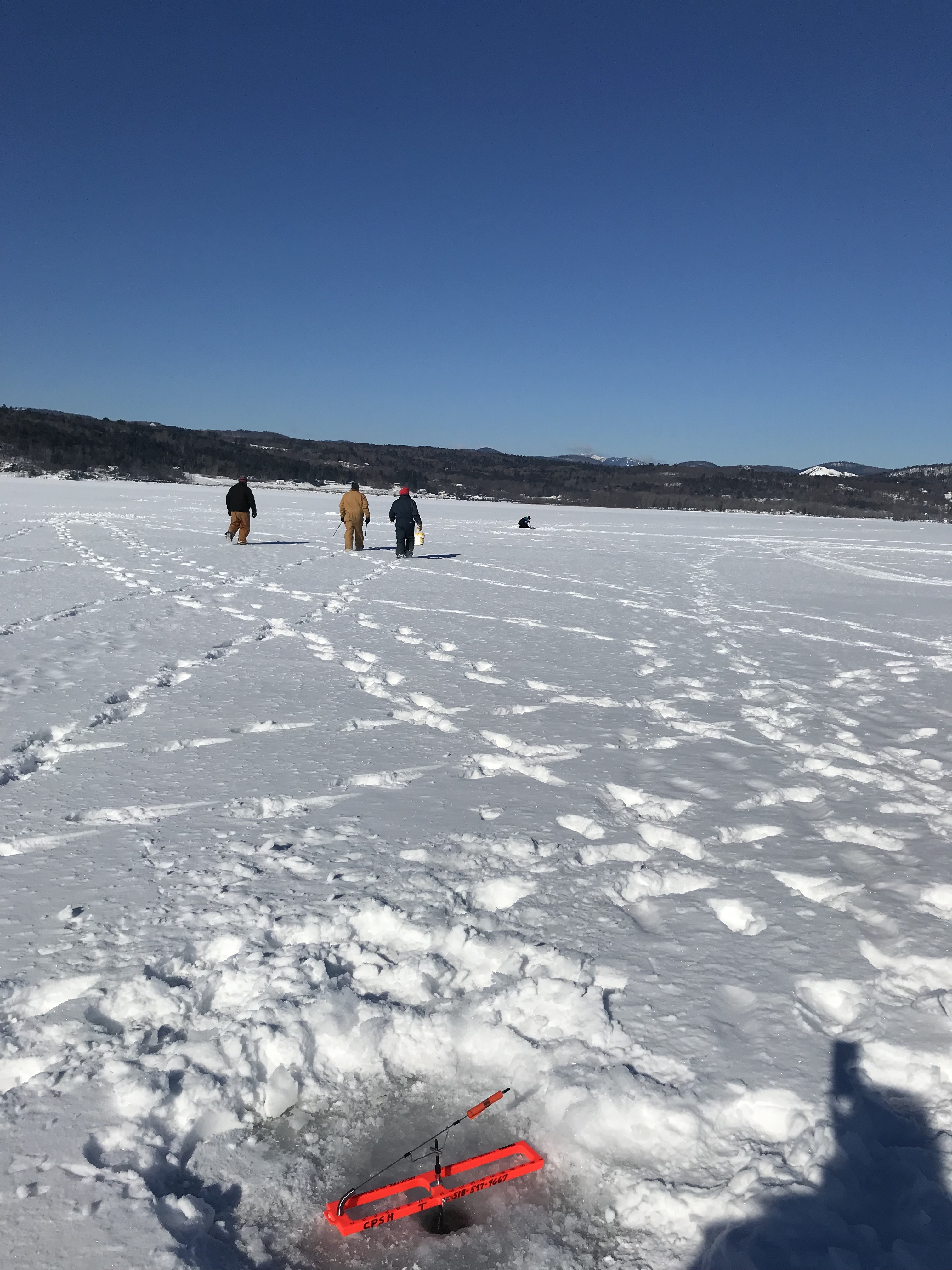
Lake Champlain fishermen have long been self-sufficient, based on necessity in a remote and rural area. Tools were hand carved to better manage certain species and shelters were constructed from discarded materials, such as the aluminum plates from printing presses in Plattsburgh or paper production remnants from the mill in Ticonderoga. As is the prevailing sensibility in the Adirondacks, nothing goes to waste when it can be of use. Shelters needed to be lightweight, portable and sturdy. Today’s shelters are made of waterproof denier fabric and weigh less than a second grader, but the ritual continues. Soon after the start of the new year, the architecture emerges disrupting the linear surface; the tents set up in the dark of early morning, their silhouettes visible at sunrise. The numbers are far fewer, the equipment more high-tech, but the serenity and magic of the frozen surface of that vast expanse and chasing what lives below endures.
As for our group of youth, they caught more fish than they could carry. Watching the kids plow towards each upturned flag with the anticipation of success, with a couple of cups of hot cocoa in between made for a winning day. I get the allure. Fishing is a lot more fun when you catch fish.
Economic, cultural, and culinary trends ebb and flow, but as long as there is ice, and someone to remember how it’s done, the lure of ice fishing remains. We are proud to provide the spark of experience, the connection to knowledge, and the opportunity to pass the traditions of ice fishing to the next generation, ensuring the culture and heritage of the Lake Champlain creep forward to meet the edge of the ice as it emerges each winter.
Crown Point State Historic Site will be featuring ice fishing again this winter, February 19th and 21st, 2020 from 8am-2p. Equipment provided. Bring a bag lunch. Registration required, email lisa.polay@parks.ny.gov. See you out on the ice!
Historical information provided by Betty LaMoria, Town Historian, Port Henry and Posen, I. Sheldon. 1986. You Can Hear the Ice Talking: The Ways of People and Ice on Lake Champlain. Plattsburgh, NY. Clinton-Essex-Franklin Library System.

